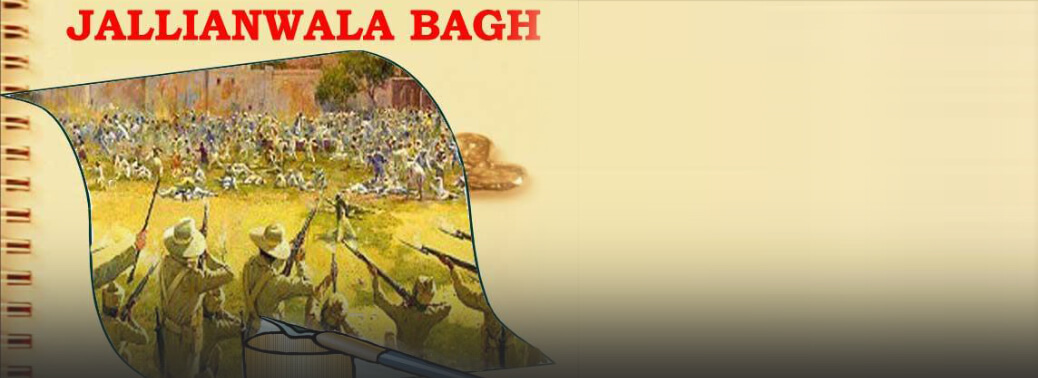BRITAIN’S REFUSAL TO APOLOGISE FOR THE JALLIANWALA BAGH MASSACRE
12, Apr 2019

Prelims level : History in News
Mains level : General Studies - I Indian Heritage and Culture, History and Geography of the World and Society
Why in News?
- British apology on the occasion of the centenary of the horrific Jallianwala Bagh massacre, more so since the demand came this time not from Indians alone but also from a strong contingent of British MPs across political parties.
- For Indians, the massacre that evokes strong emotions is not Nader Shah’s slaughter of 30,000 people in Delhi in 1739 but Jallianwala Bagh in Amritsar, where, a century ago, on April 13, troops commanded by General Dyer fired into an unarmed crowd, killing hundreds.
Background:
History:
- Before understanding the Jallianwala Bagh Massacre (JBM) one needs to understand series of events in Indian nationalism in chronology to get better idea:
- Rowlatt act→→JBM→→Non-cooperation movement
Rowlatt Act:
- The Act is passed in Central legislative assembly, despite every Indian member is against the act drafted by Sidney Rowlatt.
- The Act gave the power of imprisoning anyone without proof of conviction and there would be no trial on arrested person.
- Thus, it gagged the Habeas corpus right which is the basic right of civil liberties in Britain. As a protest to act, Gandhiji started Rowlatt satyagraha.
- In fact, Rowlatt satyagraha is the first mass movement of Gandhiji in India.
- As Rowlatt satyagraha caused a wide dissent to British rule, they widely misused the provisions of sedition, muzzling of press and arrest of popular leaders. Some of the places became violent especially Punjab.
Jallianwala Bagh Massacre:
- On 13th April, 1919 people gathered at Jallianwala Bagh (Amritsar) to protest against the arrest of the two nationalist leaders, Satya Pal and Dr Saifuddin Kitchlew. Suddenly, a British military officer, General Dyer, without even giving a warning to the people he ordered his troops to fire at the unarmed crowd for ten minutes till their ammunition was exhausted.
Jallianwala Bagh Massacre: Causes & its Impact
- The Jallianwala Bagh massacre of 1919 in Amritsar as a “shameful scar” on British Indian history. It is also called as Massacre of Amritsar and one of the most tragic yet landmark events in the history of India. This massacre exposed the inhuman approach of the British when the British troop cold-bloodedly open fire into an unarmed crowd without any warning by General Dyer which had assembled at enclosed park for the public meeting that was banned.
- On 13th April people gathered there to protest against the arrest of the two nationalist leaders, Satya Pal and Dr Saifuddin Kitchlew. Suddenly, a British military officer, General Dyer, entered the park with his troops. Without even giving a warning to the people to disperse, he ordered his troops fired at the unarmed crowd for ten minutes and when their ammunition was exhausted, they left. In those ten minutes, according to the estimates of the congress, about a thousand persons were killed and about 2000 wounded. The bullet marks can be still seen on the walls of the Jallianwala Bagh which is now a national memorial.
- The massacre had been a calculated act and Dyer declared with pride that he had done it to produce ‘moral effect’ on the people and that he had made up his mind that he would shoot down all men if they were going to continue the meeting. He had no regrets. He went to England and some Englishmen collected money to honour him. Others were shocked at this act of brutality and demanded an enquiry. A British newspaper called it as one of the bloody massacres of modern history.
- About 21 years later, on 13 March 1940, Udham Singh, an Indian revolutionary, shot Michael O’ Dyer dead who was the Lt. Governor of Punjab at the time of the Jallianwala Bagh massacre. The massacre aroused the fury of the Indian people and the government replied with further brutalities. People in Punjab were made to crawl on the streets. They were put in open cages and flogged. Newspapers were banned and their editors put behind the bars or deported. A reign of terror, like the one that followed the suppression of the revolt of 1857, was let loose.
How many people died in the Jallianwala Bagh Massacre?
- There were no official data on the number of deaths during the Jallianwala Bagh Massacre. But on the official enquiry of the British revealed that there were 379 deaths and the Congress quoted more than 1000 people were died in the massacre.
- Rabindranath Tagore, who had been knighted by the British, renounced his knighthood. In his letter to the viceroy, he declared: “The time has come when the badges of honour make our shame glaring in their incongruous context of humiliation and I for my part wish to stand shorn of all special distinctions, by the side of those of my countrymen, who for their so-called insignificance, are liable to suffer a degradation not fit for human beings”. The massacre marked a turning point in the history of the struggle for freedom.
- In December 1919, the congress session was held at Amritsar. It was attended by a large number of people, including peasants. It was clear that the brutalities had only added fuel to the fire and made the people’s determination stronger to fight for their freedom and against oppression.
Jallianwala Bagh:
- Jallianwala Bagh is a public garden in Amritsar, and houses a memorial of national importance, established in 1951 by the Government of India, to commemorate the massacre of peaceful celebrators including unarmed women and children by British occupying forces, on the occasion of the Punjabi New Year (Baisakhi) on 13 april,1919 in the Jallianwala Bagh Massacre.






